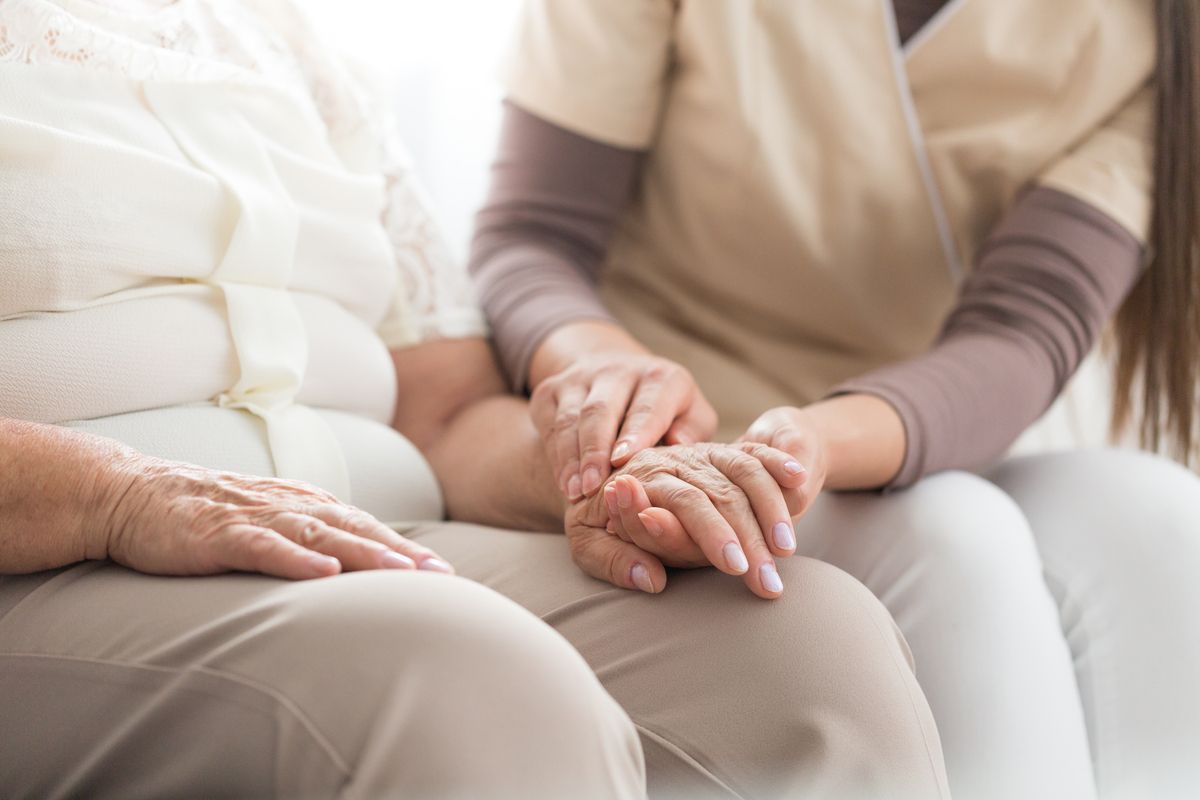
Parkinson’s disease is a very serious, degenerative neurological disorder that affects approximately 1 in 500 people globally. Unfortunately, that number is expected to increase as the population ages.
Parkinson’s disease is one of the most rapidly-growing brain diseases in the world, yet there is so much we don’t understand about it. For instance, men seem to be more affected by Parkinson’s disease than women, and scientists aren’t sure why.
Symptoms of Parkinson’s disease usually first appear at around age 60, but there is a small percentage of patients who experience early-onset symptoms for the first time before the age of 50. The early-onset forms of Parkinson’s disease are thought to be inherited genetically, and there are a number of DNA tests out there that can tell you your likelihood of developing Parkinson’s disease, including a CircleDNA test.
Due to the progressive nature of this disease, the symptoms of Parkinson’s eventually become unmanageable.
Parkinson’s patients typically lose the ability to speak, swallow, and lose control of their motor functions. This disease dramatically reduces one’s quality of life. It can be very difficult to watch a loved one suffer with Parkinson’s for this reason. Read this article on how to cope when your loved one has Parkinson’s disease.
There is still so much we do not understand about Parkinson’s disease, so let’s focus on what we do know: how it looks, what causes it, and how it is treated. Below are some of the signs, symptoms and possible treatments of Parkinson’s disease:

Symptoms of Parkinson’s Disease
The symptoms of Parkinson’s disease do not change much from person to person, but they may affect everyone to varying degrees of severity.
The most well-known symptoms associated with Parkinson’s disease are hand tremors, uncontrollable movements, or tremors in other body parts. A person with Parkinson’s disease may exhibit tremors in their hands, arms, legs, jaw, or the entire head.
Someone with the disease may also move slowly, either due to feeling off-balance or because of muscle stiffness, which are two other common symptoms of Parkinson’s. Someone with this disease may also appear fatigued and exhibit impaired cognitive functioning or emotional changes. Additionally, their speech might become so impaired that it becomes difficult to understand them.
Internally, someone with Parkison’s disease will likely have irregular blood pressure and slowed digestion resulting in constipation. This is due to the loss of nerve endings that produce norepinephrine, a neurotransmitter that controls autonomic bodily functions like heart rate and movement through the digestive tract.
Adding to the digestive issues, people with Parkinson’s sometimes have difficulty chewing and swallowing.
Spotting Early Signs of Parkinson’s Disease
After a diagnosis of Parkinson’s disease is confirmed, some patients recall strange, seemingly unrelated symptoms such as sleep or digestive disturbance. Too often, some of the early warning signs of Parkinson’s disease are simply written off as signs of aging. It’s important to monitor any sudden changes in your health, particularly if inherited diseases run in your family.
Some early warning signs of Parkinson’s disease can be hard to spot but include
- Mild tremors
- Loss of balance
- A change in handwriting
- A change in the tone of voice or sound of voice
- Sleep disturbance
- Constipation
Another early sign is what is referred to as ‘masked face’. A masked face appears emotionless or expressionless and typically occurs when the muscles of the face weaken due to stiffness.
Friends and family may notice changes such as a masked face or awkward movements more acutely than you do.
What Causes the Tremors?
Parkinson’s disease is a brain disease that is caused by the gradual death of brain cells.
Tremors are the symptoms most commonly associated with Parkinson’s disease. They are the result of dysfunction of the basal ganglia, an area of the brain responsible for, among other things, motor control, as well as two other symptoms of Parkinson’s disease: executive functioning and emotional regulation.
Neurons within the basal ganglia produce dopamine. When neurons die, less dopamine is produced. This decrease in dopamine production is what leads to muscle stiffness and tremors. Scientists are still trying to figure out what initiates neuron death in the case of Parkinson’s disease, but a few causes of neural death include brain injury, exposure to toxins, infection and genetics.
While tremors may at first occur only on one side of the body, or even just in one limb on one side of the body, in most cases tremors eventually affect both sides, although one side might remain more or less severely impacted than the other.

Treatment of Parkinson’s Disease
There is currently no cure for Parkinson’s, and this disease is degenerative. Therefore, at this time, the only thing doctors can do for the patient is alleviate the symptoms and try to slow the progression of the disease. There are two leading medical therapies used to treat and control the symptoms of Parkinson’s disease: levodopa, which stimulates the brain to produce more dopamine, and carbidopa. Carbidopa is used in conjunction with levodopa to help manage some of the unpleasant side effects of levodopa, which include nausea, vomiting and restlessness. Levodopa can sometimes be reduced when both medications are taken.
Another form of treatment known as deep brain stimulation can help patients who cannot take medication. Deep brain stimulation requires surgical implantation of an electrode within the brain as well as an electrical device in the chest. A painless electrical charge helps to control tremors, slowness and stiffness by stimulating areas of the brain that control movement.
Other Treatments and Preventative Measures
There are a number of holistic therapies that can help alleviate some symptoms of Parkinson’s, as well as help prevent them from getting worse. For instance, speech therapy can be extremely helpful for articulation.
To reduce muscle soreness and stiffness, daily walking, yoga, water aerobics or another form of gentle exercise can prevent movement-related symptoms from worsening. Massage therapy can be extremely helpful in this area as well.
Including plenty of fiber in your diet can help with constipation which is both a symptom of Parkinson’s and a side effect of the medicine that treats it. You can talk to your doctor about fiber supplements that are available as well.
Movement can help slow the progression of some of the movement-related symptoms of Parkinson’s disease, especially balance impairment, muscle weakness and stiffness.
The Bottom Line
If someone you love has been diagnosed with Parkinson’s disease there are a number of ways you can support them through this difficult transition, like helping out with chores and tasks, taking walks with them, or going with them to doctor’s appointments. It’s important to let them know that they’re not alone.
The medical community has come a long way in understanding Parkinson’s disease, but there is still so much we don’t know about preventing its onset. Living a healthy lifestyle by exercising regularly, eating a healthy, balanced diet and getting plenty of sleep is the best way to keep your brain healthy, which can help prevent some of the neural changes that lead to cognitive decline and degenerative brain disease.
If you have a family history of Parkinson’s disease, talk to your doctor. Not only will that information be useful in detecting possible early symptoms, but there are DNA tests that can give some insight into the likelihood of whether or not you may develop the disease.







Comments are closed.